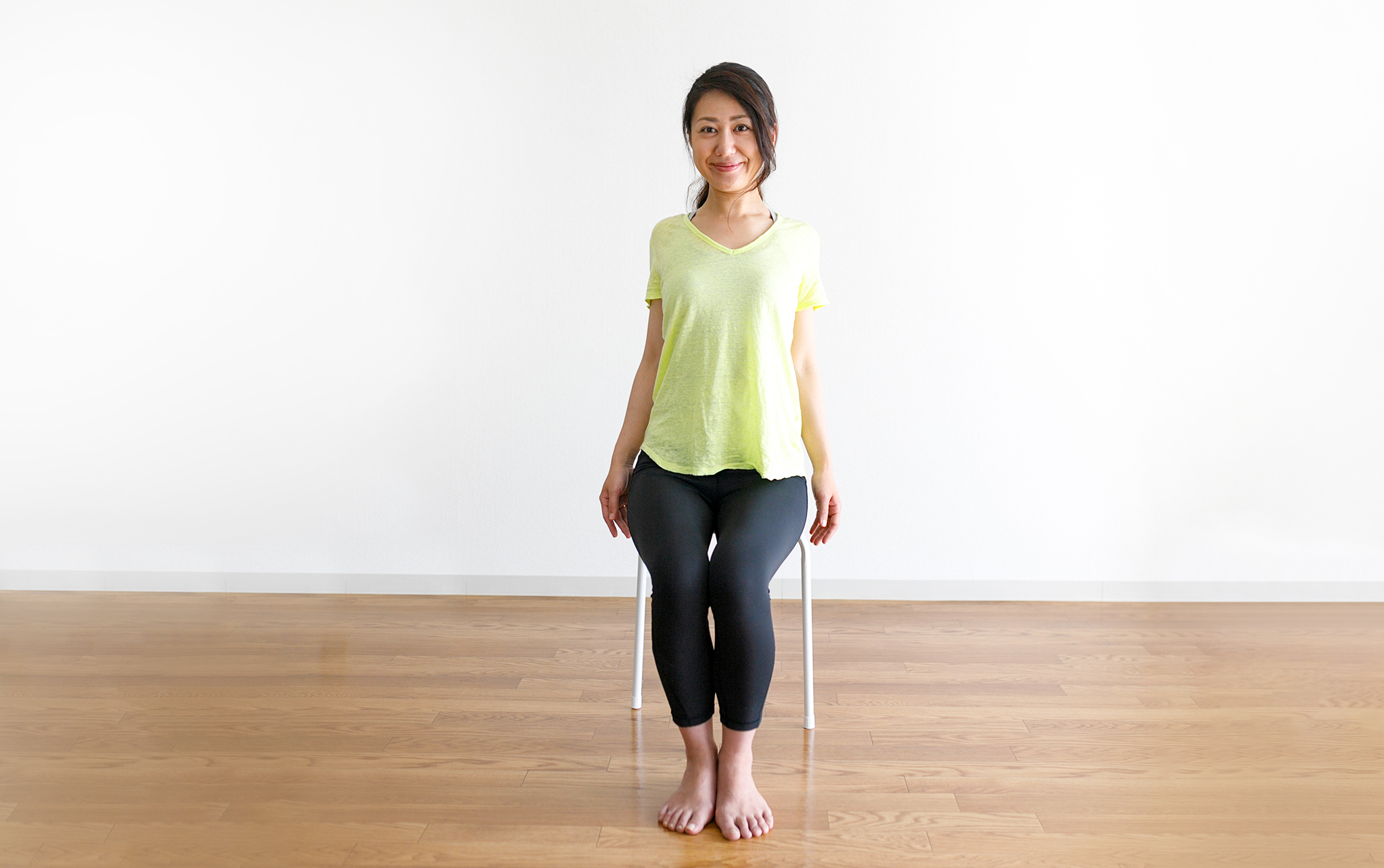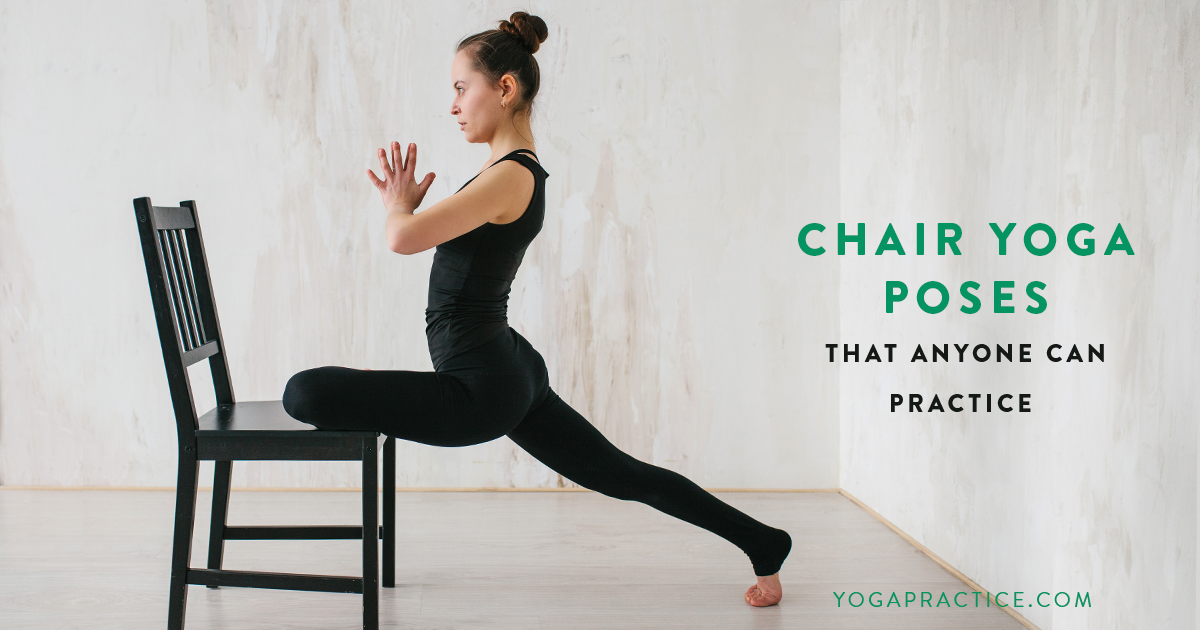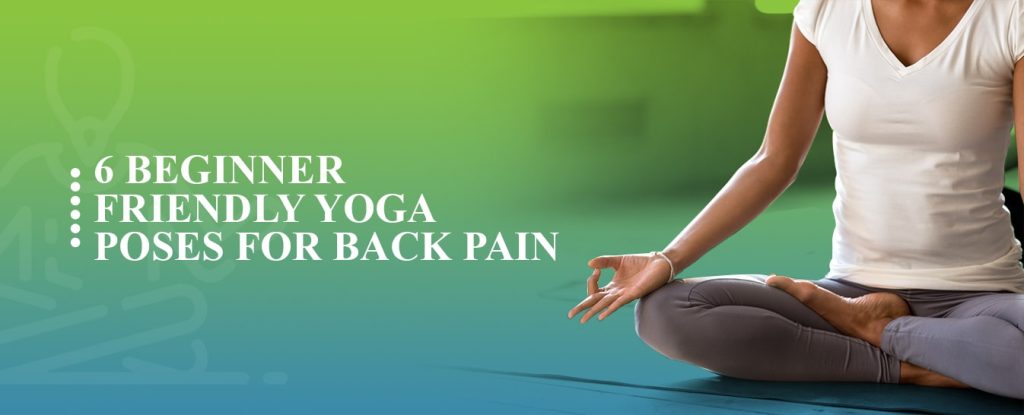
Chair yoga has many benefits. These exercises will help stretch the neck and hamstrings. You can even do these exercises from the comfort of your chair. This article will show you how to choose the best chair for your needs. These are my top chair yoga poses. Enjoy! Here are some more options:
Stretch your neck
Your neck should be stretched first in chair yoga. This will allow you to lengthen your neck, and create space between your cervical vertebrae. Place your head on your spine and stand straight. You should feel your crown lift. If this is uncomfortable, hold the side of your chair seat. Next, lower your right arm toward your right shoulder. Do not lift your left shoulder. You can do this on the other side.
Next, stretch your shoulders. By rolling your shoulders backwards and forward, you should feel a stretch in your neck. If the chair has an armsrest, you should be able reach the armrest with your hands. If the armrest is too far from your reach, you can reach toward the wall and reach your knees towards the wall. Take two to three deep breaths, and then go back.
Stretching your lower back
Chair yoga is a back-focused exercise. This gentle exercise stretches the sides, shoulders and lower back. You can do a chairback stretch by bending your legs and hinge at the hips. This stretch also benefits your chest, shoulders, and chest. You can repeat the stretch on either side, switching between the left and right. Deeply inhale as you complete the pose. You can return to standing once you have completed three to five breathing cycles. Continue the process on your opposite side.

The triangle position is the first chair yoga pose. Start by sitting up straight and placing your feet outside of the legs of the chair. Next, move your right hand behind your right leg. After a few moments, switch sides. The back of the chair can be moved behind you, instead of being forward. This exercise strengthens your lower back, core, and shoulders, while stretching your groin and thighs.
Stretch your hamstrings
Hamstring stretches can be done with a variety of tools. Hamstring stretching can be done with a yoga strap or resistance band. Start by raising your left leg up off the floor, keeping your knee slightly bent. Next, lift your other leg up and straighten it. While doing a deep stretch, it is important to maintain good posture. Keep your eyes on your breath throughout the stretch. Also, keep your knee bent slightly.
For the first stretch, place your left foot on a flat surface and your right hand on the floor. Keep your spine straight and your hips hinge. During the stretch, your calf and hamstring muscles should feel stretched. For two to three minutes, hold the stretch and then switch sides. Once you are comfortable with the stretch, it should be easy to do on your own.
Stretch your hips
You need to be able to stretch your hips while doing chair yoga. You have two options: either prop yourself up with blocks or lay flat on your back. Begin by raising your right leg and keeping your top of your knee in line with the ground. Keep your hips slightly to the left and bend forward. Keep this position for 20-30 second, and then move onto the next side.

Breathe deeply. Before stretching your hips, it is a good idea to take deep, slow breaths. You can do this many times during the chair-yoga exercises as long as your breathing remains slow and deep. You will find your hips aligned better if you properly stretch them. This can be done for around 10 minutes per day. This will also help you avoid stiffness and discomfort.
FAQ
Are you a cardio-exercise fan?
Cardiovascular exercise can have many benefits. It improves blood flow, strengthens your heart muscle and increases stamina.
Cardiovascular exercise includes running, biking, hiking, swimming, tennis, basketball, soccer, volleyball, football, etc.
It is important to remember that cardio exercises should not be performed at high-intensity levels. This could result in injury.
If you feel fine, only do the cardiovascular exercise.
Don't push yourself beyond what you can handle. You could injure yourself if you do.
Begin by warming up before engaging in cardio exercise. You can then gradually increase your intensity.
Listen to your body. If you feel pain when doing cardiovascular exercise, you should immediately stop.
After a cardiovascular training session, it is recommended that you take some time to relax. This allows your muscles time to recover.
Cardiovascular exercise can help you lose weight.
It is the most effective way to burn calories and reduce belly fat.
How to Lose Belly Fat Fast
There are several methods to rapidly reduce belly fat. One method is to eat less and drink lots of water.
Running and swimming are two other ways to boost your metabolism.
To quickly reduce belly fat, avoid sitting too much. Stand up more often throughout the day. This will help to burn more calories.
If you are having trouble losing belly weight despite trying all of these methods, there is another way.
A belt is a device that allows you to do this. The belt fits around your waist and is tightened when you sit down.
You will feel more comfortable and be able to move around. This will make you lose more calories and help you reduce your belly fat.
What is the Best Workout for Men Over 40 Years?
Older men will find that the best workouts give them more energy as well as improve their stamina.
It is important that you note that people over 40 experience a decrease in testosterone levels, which results in lower sex drive.
You can still exercise, however. Many studies show that regular aerobic exercise can boost testosterone in some men.
If you are looking to improve your sexual performance, an aerobics workout is the best option.
What is a good exercise routine?
To stay fit, you need to exercise regularly. It doesn't matter what type of fitness activity you choose as long as you do it regularly. Consistency is the key. You must be consistent if you are to see results.
Begin small daily activities like walking. Increase the time you spend exercising each day until you can do 30 minutes. You could do this by running, swimming, weight training or yoga.
Try to get active every day. Don't miss any sessions unless you have an excuse.
If you exercise outside, ensure that you wear appropriate clothing and footwear. Weather conditions can also affect your ability and safety to exercise.
When you exercise, make sure you are drinking plenty of water. Drinking alcohol during exercise can cause dehydration. Avoid caffeine-rich drinks like coffee, tea, and coca. They can provide energy, but they also dehydrate.
It's common to feel tired after your first workout. You'll feel more energetic and refreshed if you keep going with your exercise program.
How Metabolic health is key to aging well
People are living longer today than ever. But as they do, they're also getting sicker. Despite making great progress in medical science, it is becoming more apparent that our current approach to medicine is not working.
We have to change how we see health and aging. Healthful aging requires that we start to think about metabolic health, which is not only weight loss but overall well-being.
If you want to live a healthy, active lifestyle for the rest of your life, it is important to maintain a strong metabolism throughout your entire life.
The good news? There are many things you can do to improve your metabolism. One way is to include these 7 foods in your diet.
-
Resveratrol in blueberries has been shown to support cell longevity. They also contain antioxidants and vitamins C & E.
-
Beans like lentils and pinto beans are excellent fiber and plant-based protein sources. These nutrients keep blood sugar levels stable so that they don't spike or crash.
-
Broccoli contains the antioxidant sulforaphane. This has been shown in studies to protect DNA. It may even slow down cancer growth.
-
Chia Seeds have high levels of omega-3 fatty oils and fiber. They are also rich in antioxidants, protein, and fiber. All of these nutrients are good for heart health, brain function, gut health, and overall health.
-
Green Tea contains polyphenols called caechins. Studies have shown that green tea contains catechins which are linked to lower bone fractures and cardiovascular disease. They also reduce cognitive decline and diabetes risk.
-
Salmonis one of the best sources of lean protein, low in saturated fat, and packed with vitamin D.
-
Walnuts are high in omega-3s. They also contain antioxidants like alphalipoic Acid (ALA). ALA boosts energy production and reduces inflammation.
What is the best workout order?
It all depends upon what you are trying to achieve. Start with heavy lifting if you're looking to build muscle mass. Then you can move to cardio. For those who want to lose weight or exercise, you can switch from cardio to strength-training.
Start with cardio if you only want to lose fat. Next, add strength training.
You should do cardio last if your goal is to increase muscle mass. This stimulates growthhormones, which helps build muscle mass.
Also, eat before you workout. This will give your muscles more fuel, so they work harder. Plus, it makes you feel better during your workout.
Statistics
- An estimated calorie range for moderately active adult males falls between 2,200 to 2,800 calories per day, depending on age. (eatright.org)
- The PRS enabled risk stratification for overall prostate cancer and lethal disease with a four-fold difference between men in the highest and lowest quartiles (HR, 4.32; 95% confidence interval [CI], 3.16-5.89). (pubmed.ncbi.nlm.nih.gov)
- By John Thompson Take a whopping 38% off a set of PowerBlock Pros. (menshealth.com)
- 10 pounds in a month is likely during a lean bulking phase, especially for beginners. (muscleandstrength.com)
- Candidates and applicants must pass all four tests at 70% (minimum level) to graduate from Basic Deputy U.S. Marshal (BDUSM) Training. (usmarshals.gov)
External Links
How To
How do I lose fat by exercising?
Exercise reduces calories by increasing metabolism, and oxygen consumption.
Exercise at a moderate intensity to safely lose weight.
To burn fat while exercising, follow these tips:
-
Cardio exercises can include running, walking, swimming or cycling.
-
Do 30 minutes of exercise three times a week.
-
Add strength training to your workouts if you are looking to lose more weight.
-
Avoid doing intense exercises. You can build muscle without breaking down muscle tissue.
-
When exercising, make sure to drink lots of water. Water is essential for flushing out toxins and keeping your body hydrated.
-
After exercising, consume low-fat protein smoothies. Protein shakes repair muscles and increase energy.
-
Smaller meals are better for you.
-
Don't skip breakfast! Skipping breakfast can leave you feeling tired and sluggish.
-
Take care of yourself mentally. Stressful situations may slow down your metabolism.
-
Keep a positive attitude. Research shows that overweight people gain more weight if they believe they are overweight than those who believe they look good.
-
Get enough rest. A lack of sleep makes it difficult to lose fat.
-
Stay active. Be sure to get up and move around every hour or two.
-
Maintain a healthy diet. A healthy diet will help you feel fuller for longer.
-
Relaxation is possible by finding ways to relax. Relaxing doesn't mean your body releases stress hormones which cause muscle tissue to be destroyed.
A balanced diet contains all necessary nutrients for growth and development.
Six small meals per day is better than three large meals. This gives your body time and energy to process the food.
To maintain strong bones, you need to consume 500 mg of calcium each day. Calcium can also be found in milk products, yogurt, fortified Soy beverages, orange Juice, cereals and bread.
Calcium is found in leafy vegetables, beans and tofu, as well nuts, seeds and cheese.
Vitamin D is required by the body to absorb calcium. Vitamin D can also be found in some fortified foods such as eggs, fish, and yolk.
Vitamin E is essential for skin health. Vitamin E can also be found in vegetable oil, wheat germ oils, peanuts as well almonds, sunflower seeds and corn.
Your body requires zinc to function normally and for wound healing. Zinc can be found as a mineral in oysters.
Zinc deficiency could cause fatigue, nausea, vomiting, and depression.
Sugar intake can lead to insulin resistance which causes blood glucose levels to rise. Insulin resistance is linked to weight gain.
Insulin resistance develops when there are high levels of free radicals in the bloodstream. Free radicals are molecules containing unpaired electrons which cause damage to cells membranes.
Most free radicals come from pesticides herbicides, food additives, preservatives smoking, radiation, chemical in cosmetics, lotions and household cleaning supplies.
Free radical damage can lead to cancer, heart disease, diabetes, arthritis, asthma, and aging.
Antioxidants are essential for preventing free radical damage. Antioxidants protect against oxidative damage.
Vitamin C is found in citrus fruits and beta carotene is found in carrots.
Other antioxidant nutrients include selenium, copper, manganese, and zinc.
Selenium is known to protect cells from the oxidative damage that free radicals can cause. Selenium can be found in Brazil nuts and liver, kidneys, liver, kidneys, shrimp, cod, turkey and lamb as well as chicken.
Copper protects the brain, eyes, lungs, and red blood cells. Copper can be found in meat, shellfish, meat, and organ meats.
Manganese forms an essential part of bone structure. Manganese may be found in brown rice or spinach, bananas and prunes as well raisins, oatmeal and lentils.
Zinc helps with normal growth, reproduction, as well as wound healing. Zn is found in lean cuts of meat, white fish, poultry, and eggs.